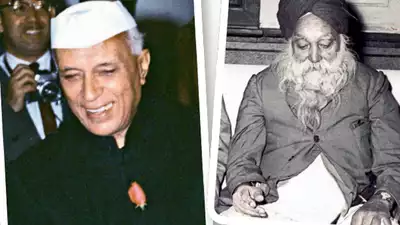REGIONAL FORMULA, one of the several schemes devised to solve the language problem in the Punjab without recasting the state on linguistic lines, was announced by the Indian government in March 1956 following a series of parleys between the Akali Dal leaders and the Central Government. It provided for amalgamation of the part B State of Patiala and East Punjab States Union (PEPSU for short) with the Punjab and the division of the entire area into two regions, Hindi and Punjabi, each with a separate regional council comprising legislators representing the respective zones in the legislature of the integrated Punjab.
TARA SINGHNEHRU PACT refers to an understanding arrived at in 1959 between Master Tara Singh, the Akali leader, and Pandit Jawaharlal Nehru, Prime Minister of India, in order to remove certain misgivings of the Sikhs with regard to government interference in their religious affairs. Looming in the background was the political demand of the Sikhs for the formation of Punjabi Suba or a Punjabi speaking state. After the failure of the Sachchar Formula and the halfhearted implementation of the Regional Scheme, the Shiromani Akali Dal under the leadership of Master Tara Singh had revived the Punjabi Suba agitation in 1958.
ANANDPUR SAHIB RESOLUTION, a frequently invoked document of modern Sikhism pronouncing its religious rule as well as its political goal. After having enjoyed power under chief ministers, Gurnam Singh and Parkash Singh Badal in the Punjab, newly demarcated in 1966, Sikhs as represented by their premier political party, the Shiromani Akali Dal, were able to capture only one seat at the elections to Indian Parliament (1971) from among the 13 which were Punjab`s portion. In the Punjab Assembly elections which took place in March 1972 their tally was a mere 24 seats out of a total of 117, and the Punjab Government passed into the hands of the Congress Party, with Giani Zail Singh (later, President of India) as chief minister.
PARTITION OF THE PUNJAB (1947) was the result of the overwhelming support the Muslim demand for the creation of Pakistan, an independent and sovereign Muslim State, had gathered in India. When the word Pakistan was first mentioned, the idea had been laughed out of court, even by the Muslims themselves. But within the next half a decade, it had annexed almost the total support of the Muslim population. During the discussions in England that preceded the passing of the Government of India Act 1935, Pakistan had been mentioned, but no one had taken it as a serious proposition.
POPULATION of the Sikhs, small as compared to other major religious communities of India, is chiefly concentrated in the Punjab, India, although being fond of travel, Sikhs are found in nearly all corners of the globe. The community is 500 years old, but the data regarding its spread geographically and numerically in the early period of its history are scarce. There is, however, evidence to show that the founder, Guru Nanak, travelled extensively in India and abroad and that there were sangats or fellowships of disciples, established at several places in the wake of his visits.
PUNJAB BOUNDARY COMMISSION was one of the two high powered panels set up under Governor General Lord Mountbatten`s partition plan of 3 June 1947 (the other one being the Bengal Boundary Commission) to divide the Punjab between India and Pakistan, the two new states that were being carved out. The almost universal support of Muslim masses to the Muslim League at the elections held during the winter of 1945-46 had reinforced the League`s demand for an independent Pakistan, comprising the six provinces of Bengal and Assam in the east and the Punjab, the North-West Frontier Province, Sindh and Baluchistan in the northwest.
PUNJABI SUBA MOVEMENT, a long drawn political agitation launched by the Sikhs demanding the creation of Punjabi Suba or Punjabi speaking state in the Punjab. At Independence it was commonly recognized that the Indian states then comprising the country did not have any rational or scientific basis. They were more the result of the exigencies of British conquest. To have some of these demographic imbalances corrected and inconvenient bulges expunged with a view to drawing up cleancut boundaries a commission was set up by Government of India in 1948.
RADCLIFFE AWARD, under which the dividing line between the West (Pakistan) Punjab and the East (Indian) Punjab was drawn, is so called after the name of the Chairman of the Punjab Boundary Commission, Sir Cyril Radcliffe, an eminent British jurist especially invited to fix the boundaries between the newly created States, India and Pakistan. The Commission was also charged with the delimiting of the boundaries of the provinces of Bengal and Punjab.











